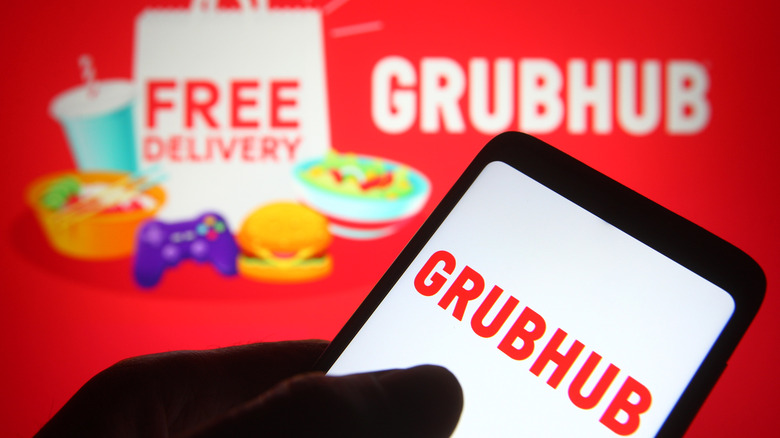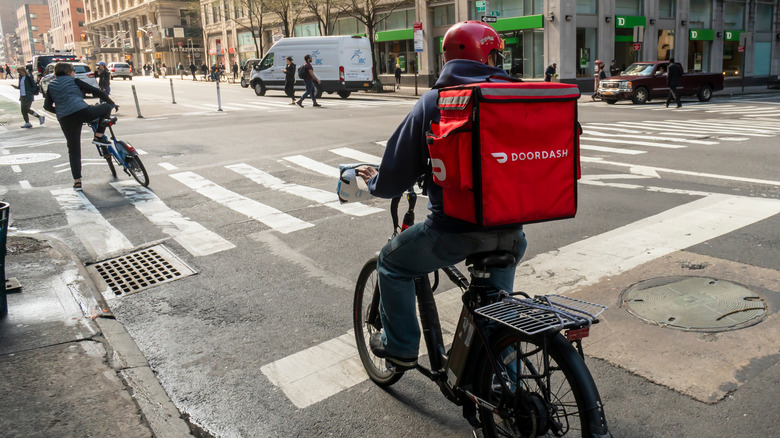Why Delivery App Fee Caps Could Be Here To Stay
On June 23, a unanimous vote from San Francisco's Board of Supervisors permanently extended the cap on what food delivery apps can charge for commission for restaurants in that city. As SFist reports, this permanent ruling means apps going forward can only charge San Francisco businesses a maximum of 15% per order. It's the first ruling of its kind in the country and other cities have started to consider following suit to cut down on what has been called "exorbitant delivery commissions" by companies like Grubhub and DoorDash.
This development comes just more than a year after the coronavirus pandemic gave the delivery app industry a perfect environment to attach itself as a forced necessity. When the lockdowns first began, huge swathes of restaurants that had previously held out against signing up with an food delivery app, due to the giant fees, caved in to the demand. After all, without indoor dining and with a public whose attention is held captive by the middlemen known as Uber and DoorDash, they had little choice. However, even as things have begun to settle into a new "normal," restaurants have found themselves beholden to the platforms — but also wanting change.
As LAist reports, until now 15% was the minimum most apps would charge for commission. Instead, real figures have tended to hover between 20-30%, causing restaurants to charge more for their delivered food (which then impacts the customer's final cost) or face the prospect of losing money with every order.
"The way that the structure is inherently set up by these companies is sort of exploitative," Katy Connors, advisory board chair with the Independent Restaurant Alliance of Oregon, told Eater. "[The apps] are preying on the fact that these restaurants have no other options, and that, at least during the pandemic, the diners had no other options."
Will the delivery app regulation work?
Whether this attempt to regulate an industry generally opposed to regulations will work is the question. The most obvious issue is that companies could switch the way they charge restaurants, as DoorDash did when Philadelphia adopted a similar measure in April. Food & Wine writes that, while the city government capped how much they could charge, DoorDash added a $1.50 "regulatory response fee." Presumably, there are many other work arounds the apps will also attempt.
On the flipside, Eater notes that DoorDash is the only app to have ever been profitable and even that was only for one quarter last year during the best possible conditions in which people were craving convenient takeout due to pandemic lockdowns.
As such, delivery app companies have argued that the caps could both hurt their drivers by lowering their income, as noted by Uproxxx, and could hurt the restaurants by removing a venue for their marketing, says Programming Insider. Of course, when you consider The Guardian's coverage of gig workers and seeing just how hard these companies fought to deny drivers health insurance or collective bargaining rights, the best case might be to order from restaurants directly and receive food from fully employed workers and removing the middleman completely.

